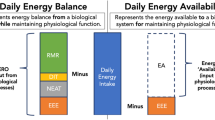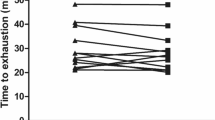Abstract
Evidence over the last few years would suggest that the observed acid-base equilibrium at various body temperatures is governed by the behavior of the protein buffer, imidazole of peptide histidine. If protein net charge is to remain the same as well as the CO2 stores of blood and tissues as the temperature changes in an open system, it is necessary for the ventilation to adjust itself to the metabolism in such a way that the relative alkalinity of the blood remains constant.
Similar content being viewed by others
References
Albery, W. J., Lloyd, B. B.: Variation of chemical potential with temperature. In: Development of the Lung, Edited by A. V. S. de Reuck and R. Porter. pp. 30–33, J. & A. Churchill Ltd., London 1967
Albers, C.: Die ventilationische Kontrolle des Säuren-Basengleichgewichts in Hypothermie. Der Anaesthesist11, 43–51 (1962)
Burton, R. F.: The roles of buffers in body fluids: mathematical analysis. Resp. Physiol.18, 34–42 (1973)
Howell, B. J., Baumgardner, F. W., Bondi, K., Rahn, H.: Acid-base balance in cold-blooded vertebrates as a function of body temperature. Amer. J. Physiol.218, 600–606 (1970)
Jackson, D. C.: The effect of temperature on ventilation in the turtle. Resp. Physiol.12, 131–140 (1971)
Kelman, G. R., Nunn, J. F.: Nomograms for correction of blood\(P_{O_2 } \),\(P_{CO_2 } \), pH, and base excess for time and temperature. J. appl. Physiol.21, 1484–1490 (1966)
Malan, A., Reeves, R. B.: Intracellular pH in turtle(Pseudemys scripta) tissues as a function of body temperature. Physiologist16, 385 (1973)
Rahn, H.: Acid-base regulation and temperature in the evolution of vertebrates. Proc. Int. Union Physiol. Sci.8, 91–92 (1971)
Rahn, H.:\(P_{CO_2 } \), pH and body temperature. In: Carbon Dioxide and Metabolic Regulations, Edited by G. Nahas and K. E. Schaefer. pp. 152–162. Berlin-Heidelberg-New York: Springer 1974
Reeves, R. B.: An imidazole alphastat hypothesis for vertebrate acid-base regulation: Tissue carbon dioxide content and body temperature in bullfrogs. Resp. Physiol.14, 219–236 (1972)
Reeves, R. B.: Temperature induced changes in whole blood pH and\(P_{CO_2 } \) at constant carbon dioxide content. Fed. Proc.32, 349 (1973)
Robin, E. D., Bromberg, P. A., Cross, C. E.: Some aspects of the evolution of vertebrate acid-base regulation. Yale J. Biol. Med.41, 448–467 (1969)
Severinghaus, J. W.: Blood gas calculator. J. appl. Physiol.21, 1108–1116 (1966)
Author information
Authors and Affiliations
Additional information
This study was aided by Contract N00014-68-A-0216, (NR101-722), between the Office of Naval Research, Department of the Navy, and the State University of New York at Buffalo.
Rights and permissions
About this article
Cite this article
Rahn, H. Body temperature and acid-base regulation (Review article). Pneumonologie 151, 87–94 (1974). https://doi.org/10.1007/BF02097155
Received:
Issue Date:
DOI: https://doi.org/10.1007/BF02097155




